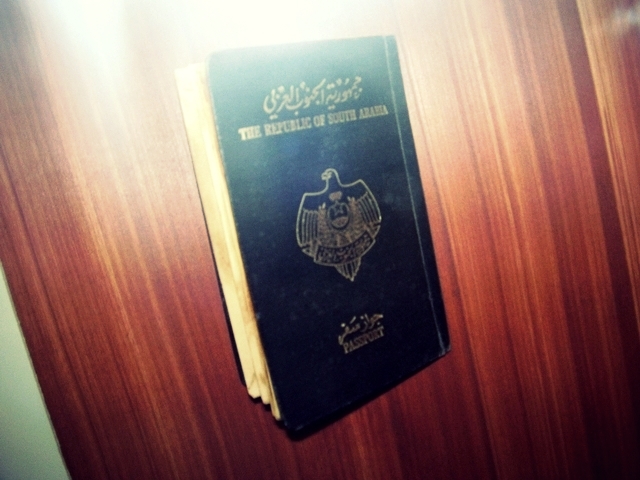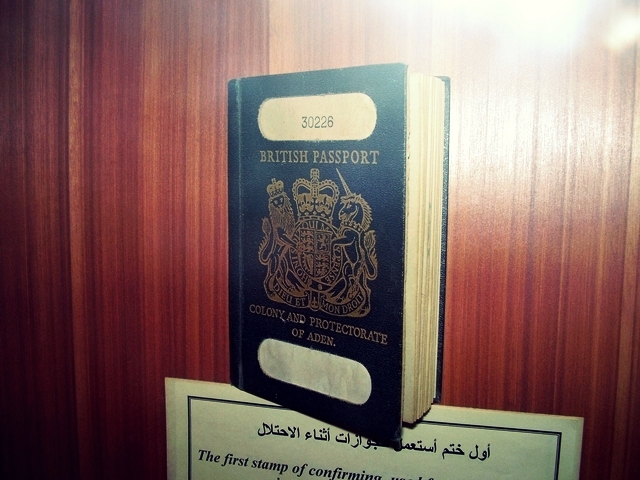Hadhramout's Search for Identity
 One of the oldest civilizations in the world, Hadhramout has changed its identity many times. At one time, its capital and main city was in Shabwa. The marvelous cities of Shibam and Tarim have seen their heydays due to these changes. Now, it is Mukalla and Seiyoun that are the main and central political and economic capitals. Hadhramout's rulers, size and borders have changed many times. Before Southern Yemen's independence, there were two sultanate, states in Hadhramut: the al-Qu'aiti's (who ruled much of Hadhramaut and were from Yafa'ae in the far Eastern part of Yemen) and the al-Kathiri's. After independence in 1967, these two sultanates were joined (and is what is present day Hadhramaut) to become part of Southern Yemen. Since Southern and Northern Yemen united in 1990, Hadhramout has been part of the present day Yemen. At the National Museum for Antiquities in, Crater, Aden - there are several displays of past and present identity, travel documents, among which are for Hadhramout.
One of the oldest civilizations in the world, Hadhramout has changed its identity many times. At one time, its capital and main city was in Shabwa. The marvelous cities of Shibam and Tarim have seen their heydays due to these changes. Now, it is Mukalla and Seiyoun that are the main and central political and economic capitals. Hadhramout's rulers, size and borders have changed many times. Before Southern Yemen's independence, there were two sultanate, states in Hadhramut: the al-Qu'aiti's (who ruled much of Hadhramaut and were from Yafa'ae in the far Eastern part of Yemen) and the al-Kathiri's. After independence in 1967, these two sultanates were joined (and is what is present day Hadhramaut) to become part of Southern Yemen. Since Southern and Northern Yemen united in 1990, Hadhramout has been part of the present day Yemen. At the National Museum for Antiquities in, Crater, Aden - there are several displays of past and present identity, travel documents, among which are for Hadhramout.
At one time, the British had the most influence in Southern Yemen; it is they who, due to their support for the Qu'aiti's made the Kathiri's weak. The above travel documents, for - Kathiri's, Quaiti's and Aden's - were all British influenced.
Above: British administered passports for - Qu'aity State, Kathiri Sate, South Arabia; Hadhramout was, then, a part of these.
During the British rule in Southern Yemen, many Hadharem used British Indian Passports, like the one above, to travel. Note the words 'Aliens Registration' (commonly used in former British colonies) in the second document. Mahra, under British influence, too, had its own separate passport (on the right) - the British are known for their 'divide and rule' strategy.
Hadhramout's changing identity: at one time, the two sultanates of Hadhramout belonged to the British controlled Republic of South Arabia.
Hadhramout's changing identity: the British had a special passport for those under their rule under the Aden Protectorate which Hadhramout was in. My late father, used a travel document similar to this (above) when he migrated fled from Hadhramout.
Hadhramout's changing identity: a personal identity card similar to the one above, is what the Hadharem had for internal use until Yemen's unification in 1990.
Hadhramout's changing identity: above, samples of passports issued to a very few by the authorities of The People's Democratic Republic of Yemen. And, below, samples of passports issued to Yemenis since unification in 1990.









